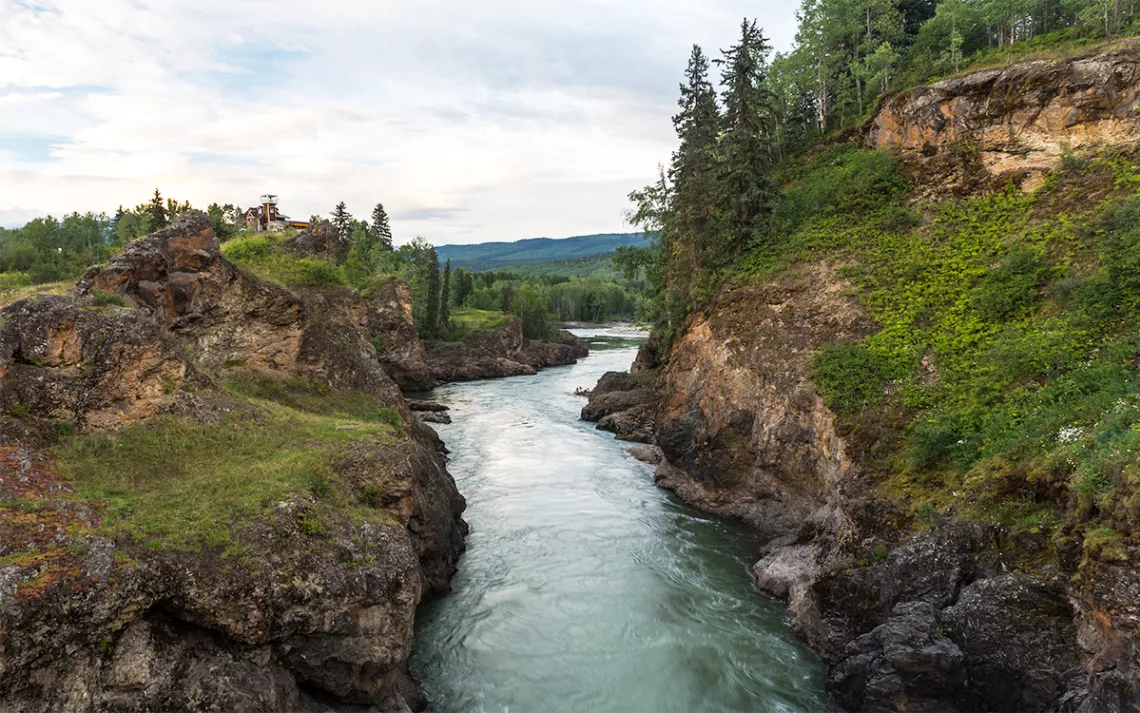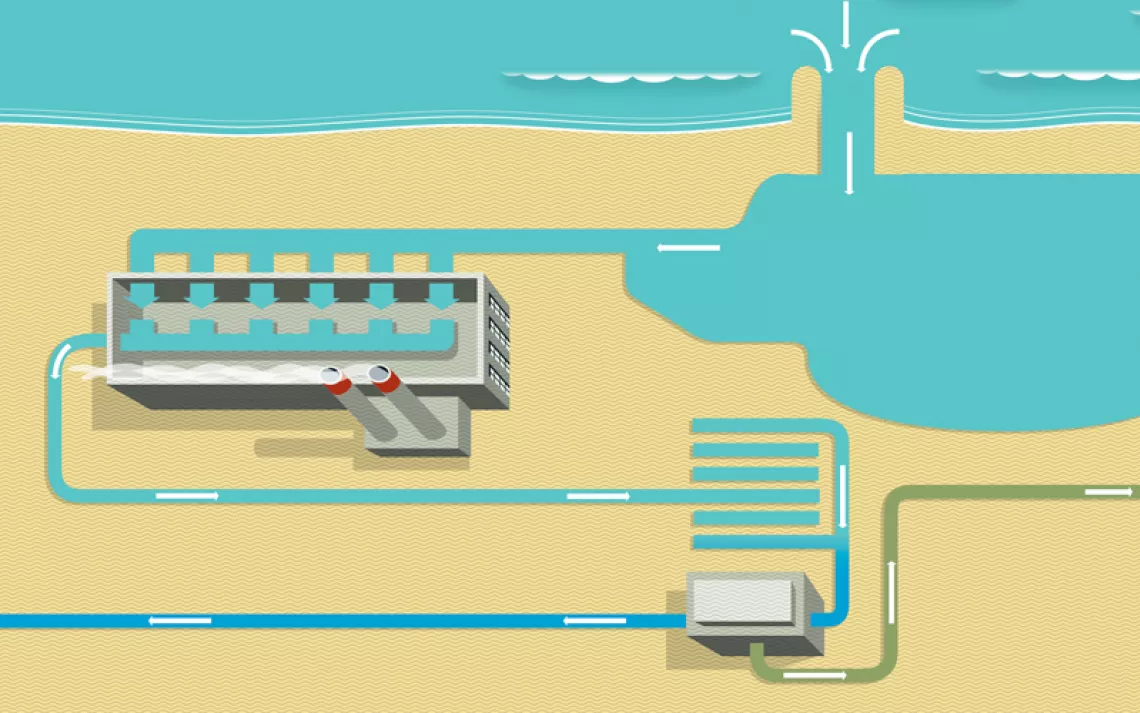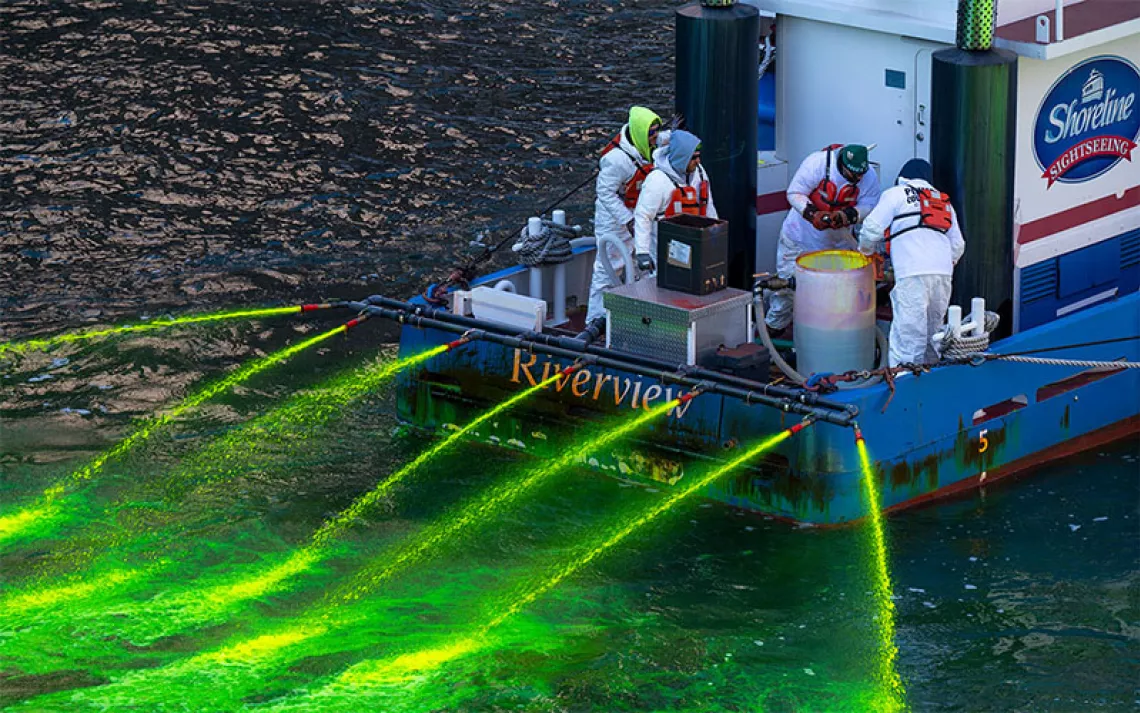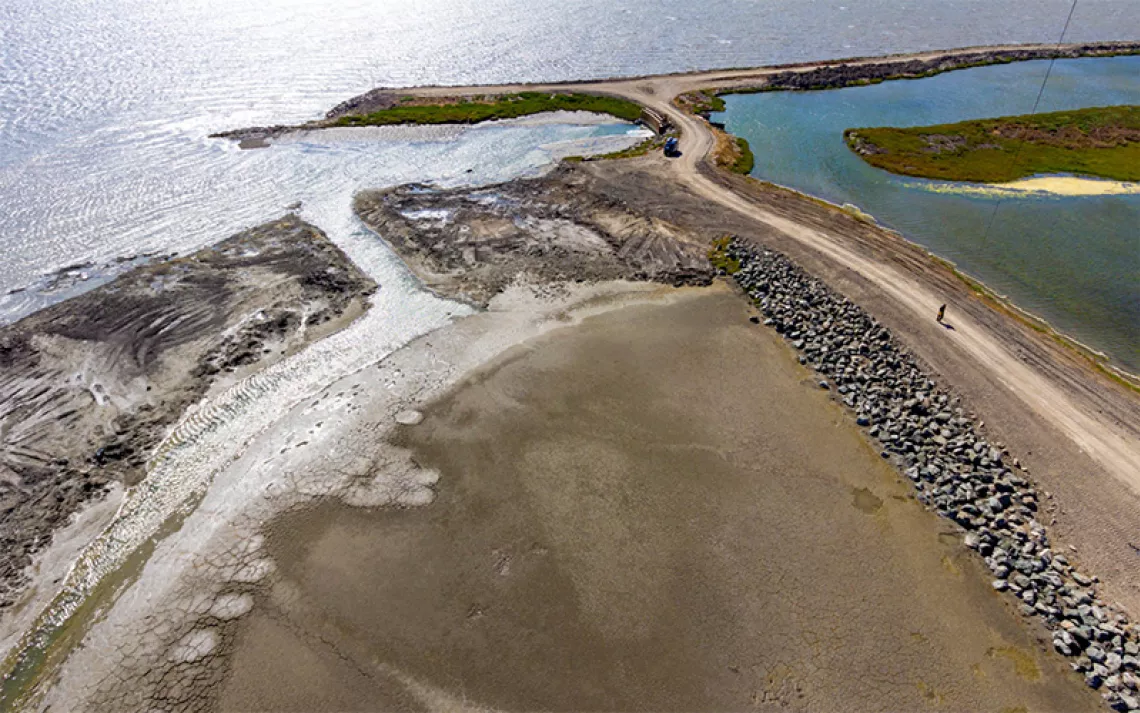“Out of Sight, Out of Mind” Site C Mega-Dam Threatens the Peace River
BC Hydro pushes forward in spite of environmental, economic concerns

Photo by Strekoza2/iStock
In British Columbia, the lush waters of the Peace River form the background to a unique microclimate supporting one of the richest wildlands in North America. The Peace is home to numerous parks and reserves, including the Peace River Wildland Provincial Park; downstream is the Wood Buffalo National Park, a protected area larger than Switzerland, listed as a UNESCO World Heritage Site—home to the largest inland delta on earth, and internationally recognized for its importance to migratory birds, and the only known place endangered whooping cranes nest.
Last fall, UNESCO threatened to put Wood Buffalo on its list of World Heritage Sites in danger, specifically naming a dam now under construction there, called Site C, as a major concern.
“Everyone in British Columbia is connected to the Peace River, whether they know it or not” says Chistopher Pollon, who has paddled the river’s length of 50 miles, interviewed residents, and explored the nearby area’s maze of oil, gas, and forestry roads. He is the author of Peace in Peril.
Site C is the third in a series of dams proposed by BC Hydro for the Peace River. Owned by British Columbia, BC Hydro runs the province’s power supply, mostly with large hydro projects. The independent BC Utilities Commission oversees the monopoly, governing rate increases and generally watching out for ratepayers’ interests. With the BCUC’s blessing, BC Hydro built the first dam on the Peace, the WAC Bennett Dam, in 1968. The Peace Canyon Dam followed in 1980. Today, both produce cheap power, giving British Columbia some of the lowest electricity rates in North America. The Peace River’s waters produced one-third of B.C.’s power.
A proposal for Site C lingered on the shelf until 2010, when the provincial government, led by the Liberal party, passed the Clean Energy Act. It exempted new large hydroelectric dams from a BC Utilities Commission Review. In October 2014, Site C received environmental assessment approval from a joint federal and provincial independent body and a Joint Review Panel. Together the two reviews examined environmental, economic, social, health, and heritage impacts of the project.
“Site C . . . would lock in low rates for many decades and would produce fewer greenhouse gas emissions per unit of energy than any source save nuclear,” the review concluded. The panel never made a build-or-don't-build recommendation, leaving that to politicians—but it noted the many adverse effects of the proposed dam and delivered 50 recommendations, including a suggestion that the government require a BCUC review before proceeding.
That never happened. Instead the estimated $9 billion project was approved in 2014. When it’s completed in 2024, it will produce enough power for 450,000 homes for at least 100 years. BC Hydro plans to finance the project with debt, passing on the cost of the project to customers over 70 years. Construction began in 2015 despite objections from land owners, First Nations, environmentalists, scientists, and even the review panel’s chair.
“The project doesn’t make sense on a lot of fronts,” says Galen Armstrong, a campaigner for the B.C. Chapter of the Sierra Club. He says concerns fall in four main buckets: environmental, cultural, agricultural, and economic.
The earthen dam and reservoir will flood 25 square miles of land, including homes, farms, forest, and First Nations cultural sites. Several First Nations groups in the area object to the project’s impact on their traditional territory and say they were not properly consulted, a requirement under law. Private land owners will lose their homes and property, including the area’s best farmland. “The Peace could feed 1 million people,” says Armstrong. “The dam would permanently destroy much of that potential.”
In 2014, Chris O’Riley, the top executive overseeing the project, justified Site C to the media by highlighting the economics. “You don’t build something like this for today or even 10 years; you build it for the long term,” he said. BC Hydro continues to forecast 1.1 percent growth in power needs per year and a 40 percent growth in electricity demand over the next 20 years, both from increased residential and industrial needs. However, according to BC Hydro’s own data, power use in the province has been flat since 2005.
This past April, a group of 370 academics from across the country signed a document recommending the province halt construction on Site C pending a BC Utilities Commission review. By their math, the province won't need the power until at least a decade after the generators start spinning, will struggle to find a buyer for the excess power, and end up selling it on the spot market at a much lower price than it costs to produce. Plus, large dam projects tend to go over budget by anywhere from 27 to 90 percent. All told, the report estimated Site C will lose anywhere from $800 million to $2 billion.
Even Harry Swain, who chaired the government review of the project, thinks taxpayers should walk away from Site C, in spite of the $2 billion already spent and another $2 billion in contract obligations.
“There is no need for Site C,” he says. “I calculate that of the $9 billion it will cost, at least $7 billion will never be returned. I think we’re making a very big mistake.”
If even energy experts think it’s a bad idea, why does BC Hydro and the Liberal government keep pushing ahead? One possibility is that it is part of a provincial strategy to woo liquefied natural gas investment. The Peace River is the center of a shale bed natural gas boom that’s driving an estimated $35 billion in proposed liquefied natural gas infrastructure for the B.C. coast. A dozen projects propose to pipe natural gas mined in the Peace River area to the coast, load it on ships, and sell it to Asian markets. Site C could power the energy-intensive condensing process. But for all the announcements of multibillion-dollar projects and unabashed government support, only one small LNG facility is under construction.
Site C could also be part of a national carbon-reduction strategy. The Canadian government has promised a carbon tax, and B.C.'s eastern neighbors, Alberta and Saskatchewan, are mostly powered by coal. Site C could offer carbon-emission relief to its neighbors and a future LNG industry.
Most compelling for politicians: Site C is good for jobs. Construction of the dam employs 2,000 people, 41 percent of them from the local area. Many of those jobs will last for another seven years.
Armstrong scoffs at all those suggestions. “To subsidize the LNG industry with cheap power or electrify the oil sands in Alberta to cut carbon emissions?” he says. “It’s ridiculous.” Plus, studies suggest the land flooded by the dam will emit significant quantities of methane as the ground cover rots. As for jobs, “The reality is, we could create a lot more jobs elsewhere in the economy with $9 billion than the 40 permanent jobs Site C will create.”
Pressure is mounting to stop the project, says Christopher Pollon. A provincial election in May elected a new government led by the New Democratic Party. They sent Site C for a review by the BC Utilities Commission. But as Pollon notes, despite the area’s influence on everyday life, it remains a long way from where the majority of British Columbians live and sits low on the priority list of most politicians.
“It’s an important issue,” Pollon says. “But the fact is, Site C is out of sight and out of mind.”
 The Magazine of The Sierra Club
The Magazine of The Sierra Club







